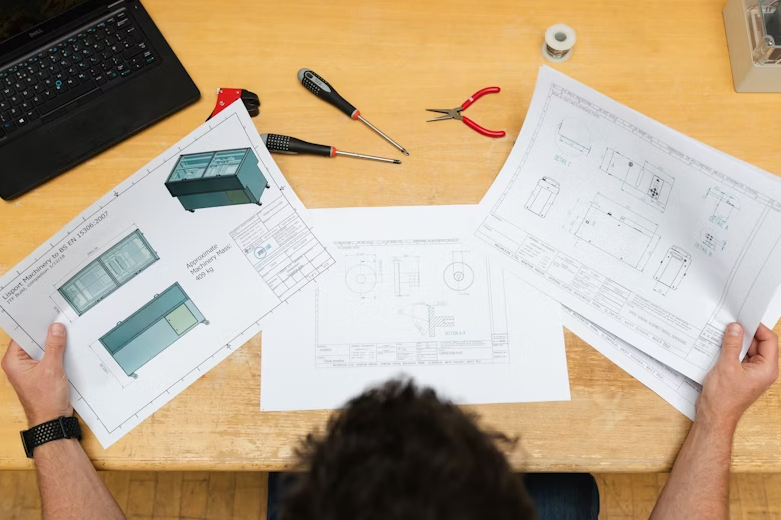How Engineering Education Shapes the Innovators of Tomorrow
The world really depends on engineers. They design, invent and improve almost everything around us which includes clean energy, transportation and technology we use every day. But the challenge isn't just finding engineers. It's finding creative thinkers who can actually innovate.
For a long time, engineering education focused mostly on rigid learning. Students memorized theories and formulas which they often forgot right after their exams. Today's world moves too quickly for that. So many industries are evolving faster than traditional teaching methods can keep up.
Universities have realized this and have started to change how they teach. They now mix science with creativity and theory with practical experience. This change is helping build engineers who are not only skilled but who can also lead progress in any field.
Modern engineering programs are shaping future innovators who think deeply, act decisively and design responsibly. The purpose of this article is to show how that transformation is taking place right now.
1. The Power of Problem-Based Learning in Engineering
Problem-based learning or PBL has become one of the most effective approaches in engineering studies. It gives students real problems to solve instead of just information to memorize.
For those pursuing a bachelor in engineering, this is the first time they deal with challenges that have no single correct answer. They work in teams, research information and test ideas that may or may not work. That's how real engineering happens.
PBL develops essential skills:
- Critical thinking which helps students analyze complex issues
- Adaptability which teaches them how to pivot when plans fail
- Teamwork which strengthens collaboration and shared effort
- Persistence which builds patience through trial and improvement
When students face such problems, they start to understand that engineering is not about solving equations but about creating solutions which improve daily life. It's a mindset shift that prepares them to innovate under real pressure.
2. Integrating Technology and Innovation Early in Education
Technology has kind of become the backbone of every engineering class now. It's not something students get introduced to later on anymore. From the first year itself, they're already working with design tools, simulations and modeling software that used to be reserved for advanced projects. It's really changing how they think about what they're learning and how they use it.
Technology is being used so naturally in classrooms now that it's almost like a second language for many of them. The tools are not just introduced, they're part of the process from the start which means students are learning by doing rather than only by listening. And when that happens the concepts get internalized in a very different way.
By the time they graduate, students have usually handled the same kinds of tools professionals use in the industry. So when they start their jobs, they're not totally lost or overwhelmed by new systems. They already know how things work which makes them confident contributors from day one even if they still have a lot to learn.
3. Collaboration: The Core of Engineering Breakthroughs
Innovation usually happens in teams. Engineering programs now encourage group work because collaboration mirrors what happens in real workplaces.
Students often work with peers from other departments. A civil engineering student might team up with someone in design or computer science. These experiences help them learn different ways of thinking which broaden problem-solving ability.
Collaboration teaches them to:
- Communicate ideas in a clear and confident way
- Respect differences in thought and approach
- Share goals and take responsibility together
- Solve conflicts while staying productive
Through teamwork, students realize how ideas evolve when they are shared and refined. It's rarely perfect but it's always educational.
4. Nurturing Entrepreneurial Mindsets in the Classroom
Engineering today isn't only about designing efficient systems or solving equations in a lab. It's about creating something bigger, something that opens up new possibilities. That's why we have these really active innovation labs, startup spaces and entrepreneurship courses popping up everywhere.
The whole point is to teach students how to look at the world a little differently. Instead of waiting for problems to be handed to them, they're encouraged to spot issues themselves and figure out how to fix them in smart, meaningful ways. They try to turn rough ideas into something that can actually work, maybe even something people might one day buy or use.
They end up practicing all sorts of stuff, like pitching their projects to mentors, testing out markets that might not even exist yet and getting advice from professionals who've actually been through the ups and downs of building things from scratch. It's a lot more hands-on than what people expect from a classroom.
And through all that, they pick up skills that really matter, things that honestly stick with them for years:
A lot of students who go through this kind of training end up changing the way they see their careers. They start to realize that they don't have to just follow the usual path or fit into existing companies. They can start something of their own if they want.
And some of them do, actually. They become the ones who create the technologies other people use. They move from being users to inventors, which is kind of what modern engineering is supposed to be about anyway.
5. Sustainability and Responsibility as Core Lessons
These days, you can't really talk about engineering without mentioning sustainability. It's a big deal now. Most programs make sure students think about how what they build actually affects the world around them. It's not just about designing cool stuff anymore; it's about designing things that don't mess things up for everyone else.
Students take classes on renewable energy and waste reduction, sometimes even sustainable construction which kind of opens their eyes to how every choice matters – like the materials they use, how much energy a system needs or what happens when a product reaches the end of its life. It's all connected and they start realizing that pretty quickly.
By picking up these lessons early, engineers start to see the whole picture, even the messy parts that don't fit neatly into equations. They learn that innovation isn't just about progress but about responsibility too. And that balance kind of changes how they see their role. They begin to design not only for success but for sustainability, which honestly feels like the point of the whole thing.
Engineering education has evolved into something far more dynamic. It now combines creativity with responsibility and theory with action. Students are trained to analyze problems deeply and design solutions which actually matter.
So what's the real outcome? We're seeing graduates who can think critically, work collaboratively and innovate confidently. They understand how technology fits into social and environmental systems.
Modern education isn't just producing engineers anymore. It's creating innovators, leaders and problem solvers who will shape a smarter and more sustainable world.
839GYLCCC1992




Leave a Reply